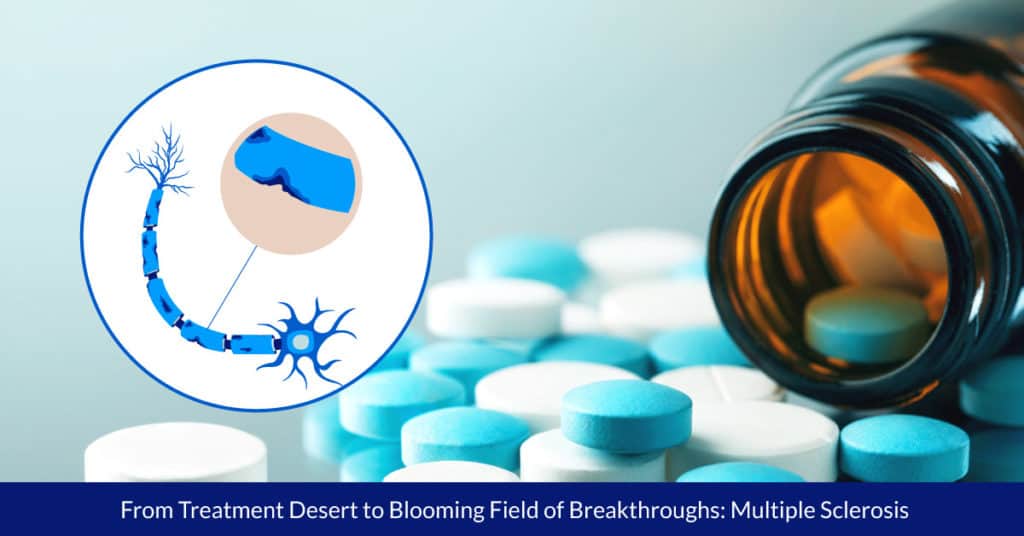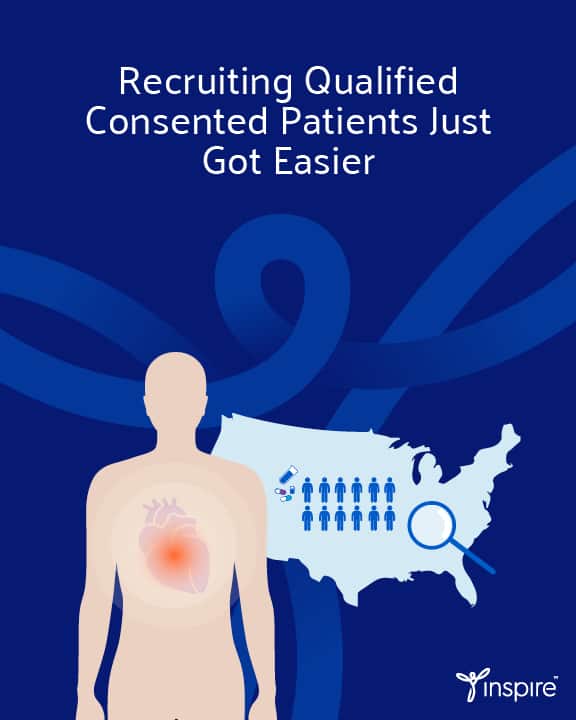From Treatment Desert to Blooming Field of Breakthroughs: Multiple Sclerosis

By Kathleen Hoffman, PhD, MSPH
Research prior to 2019 underestimated the prevalence of neurological diseases, and specifically Multiple Sclerosis (MS) by over one-half. A new algorithm, including health insurance claims data, determined that the population suffering from MS was not around 400,000 but actually closer to one million (913,925).1,2
This discovery continues the forward progress begun in 1981 when the first MRI pictures of a brain affected by MS were produced, revolutionizing MS diagnosis. Eleven years later, in 1992, the National Multiple Sclerosis Society funded the first comprehensive search for genes that make people susceptible to MS. The scientific advances since then have transformed what was once a treatment desert into a blossoming field of breakthroughs. Several news stories this past year illustrate the wide-ranging progress in research and treatment for Multiple Sclerosis (MS):
- While MS is yet to be cured, in March, the FDA approved another disease modifying therapy (DMT) for relapsing MS in adults, ponesimod (Ponvoroy™). The approval was based on the OPTIMUM Phase III trial findings that compared ponesimod with another oral DMT, terofluminide (Aubagio®). Based on 1133 trial participants, ponesimod was found to provide a 30.5% lower annual relapse rate than terofluminide.3
Ponesimod is a selective sphingosine-1-phosphate receptor 1 (S1P1) modulator, whereas teriflunomide is a pyrimidine synthesis inhibitor. The S1P modulators are thought to work by keeping the lymphocytes inside the lymph nodes and out of blood circulation, thus reducing their participation in the inflammation in nerve tissue that MS causes. Impressively, the results showed the rate of new or enlarging T1 and T2 lesions was reduced by 56%.3, 4
What about quality of life? One of the secondary study points assessed the Patient Reported Outcomes using a tool called the FSIQ-RMS (Fatigue Symptoms and Impacts Questionnaire – Relapsing Multiple Sclerosis). Fatigue is a major factor in MS. For this questionnaire, a weekly baseline symptom score was kept for 108 weeks. With a baseline of 0 and a high of 6, a lower score is better as it indicates less fatigue, and the mean difference was -3.57 for ponesimod. That is, the mean score for people taking ponesimod was 3.57 points lower than the other group.3
- A nationwide stem cell MS trial is actively recruiting. Based at 19 sites nationwide, the BEAT-MS study compares stem cell transplant to the “most effective medications used to treat relapsing multiple sclerosis (MS).” Eligible patients will be over 18 and have MS relapses or active lesions despite being on prescription MS medication. Everyone in the trial will receive some form of treatment.5
- The results of 2 studies comparing early aggressive treatment with escalating treatment for MS both found evidence that going aggressive with more powerful DMTs early on yielded better long-term results for fighting disease progression.5
One study published in June used a database of Norwegian MS patients. The study compared patients who had been treated first with moderate efficacy DMTs (interferons, glatiramer acetate, teriflunomidem, demethyl-fumarate) with those who had received front-line treatment with high efficacy DMTs (natalizumab, fingolimod, alemtuzumab) at 1 year and 2 years. The endpoint they were considering was the rate of NEDA, No Evidence of Disease Activity.6 Both the US and the EU treatment guidelines recommend that the high efficacy drugs be used only for highly active MS cases, because of their riskier safety profile.
The study findings were that 68.0% of patients who started a high efficacy DMT as the first drug achieved NEDA at year 1 and 52.4% at year 2, as compared to 36.0 and 19.4% of patients who started a moderate efficacy DMT as a first drug. They concluded that, “[p]atients with a medium or high risk of disease activity were significantly more likely to achieve NEDA on a high efficacy therapy as a first drug compared to moderate efficacy therapy as a first drug.”5
Similarly, an Italian study compared two groups of patients with relapsing MS. One group had been treated with an “escalation strategy,” where high efficacy drugs were introduced after moderate efficacy drugs had yielded poor results (ESC group), which is a typical treatment guideline for patients with moderate relapsing MS. The other group received early intensive treatment (EIT group). Patients with similar backgrounds were paired, and the 363 pairs were followed for an average of 8.5 years. The study looked for differences in each pair’s mean annual Expanded Disability Status Scale (EDSS) changes compared with baseline values (delta-EDSS). A higher score indicates a worsening status.7
The study found that, during the first year, the ESC group was modestly worse on the EDSS scale than their EIT counterparts (0.1). However, by five years, the ESC group was three times worse (0.3), and at ten years, almost seven times worse (0.67) than the EIT group. The research team concluded that early intervention with higher efficacy medication yielded better prospects for controlling disability over time.5
Getting to Diagnosis
While treatments continue to broaden, arriving at an MS diagnosis can be complicated, given that its symptoms may emerge gradually and often occur as flares. One Inspire member said:
About a year ago I posted on here asking if anyone had symptoms like mine including: loss of function and sensation in my legs, constant tingling, spasms, clonus, trouble with gait and balance, etc. (without having any tumors causing these issues). For [ several years] doctors had been saying this was a rare manifestation of NF [neurofibromatosis]. I never felt this conclusion was right, especially without evidence. In [[date] I finally got them to agree to more tests including a spinal tap… When I finally got the tests, my spinal tap showed I had Oligoclonal Bands, which is an indication of an inflammatory neurological condition, but not seen in NF. After some more investigation, it was determined that the lesions on my brain were not from NF but Multiple Sclerosis. So in September of this year, I was finally diagnosed with Primary Progressive Multiple Sclerosis.
Participants with MS on Inspire have a lot in common with all Inspire members in that they discuss new treatments, learn about clinical trials, and share their remedies for common side effects. They also find community and camaraderie. Given that having MS is a long-term journey, having company and support is an important health asset. Given the increasing array of treatments for MS, patients, families, and researchers have many reasons to look forward to more relief and remission from MS.
Inspire offers a trusted community to patients and caregivers. Our goal with this blog, this website and our content is to provide the life science industry access to the true, authentic patient voice. In so doing, we support faithful operationalization of patient-centricity. Take a look at our case studies, eBooks and news outlet coverage.
References:
1 https://www.nationalmssociety.org/About-the-Society/MS-Prevalence
2 https://www.nationalmssociety.org/About-the-Society/MS-Prevalence/MS-Prevalence-FAQ
3 https://jamanetwork.com/journals/jamaneurology/fullarticle/2777917
4 https://mymsaa.org/news/fda-approves-ponvory-for-the-treatment-of-relapsing-forms-of-ms/
5 http://www.beat-ms.org
6 https://www.ncbi.nlm.nih.gov/pmc/articles/PMC8248666/
7 https://journals.sagepub.com/doi/full/10.1177/17562864211019574






